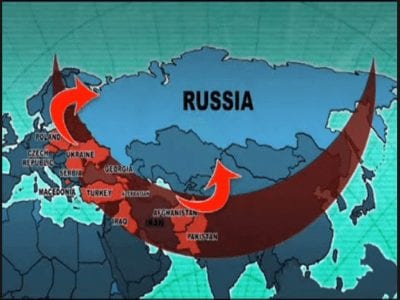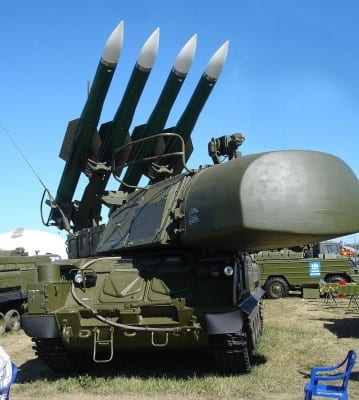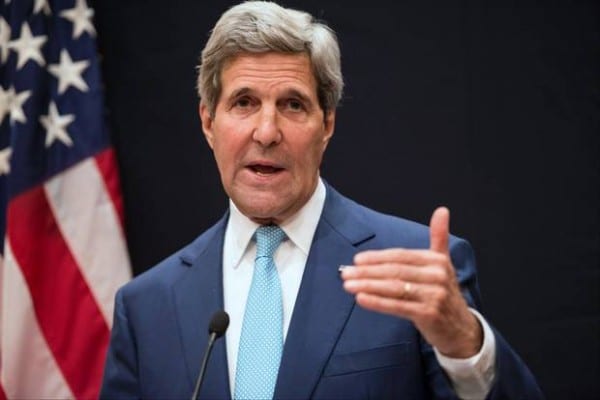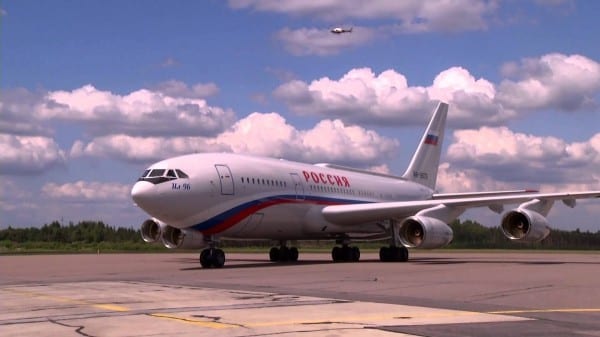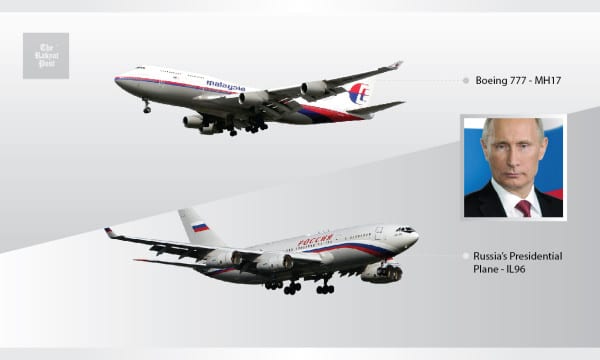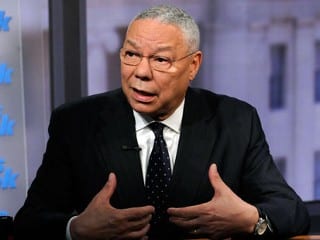[G]eopolitical observers of the Middle East turbulence tend to blame the raging chaos in the area on the presumed failure of the “incoherent,” “illogical” or “contradictory” policies of the United States. Irrefutable evidence (some of which presented in this study) suggests, however, that in fact the chaos represents the success, not failure, of those policies—policies that are designed by the beneficiaries of war and military adventures in the region, and beyond.
While U.S. policies in the region are certainly irrational and conflicting from the standpoint of international peace, or even from the standpoint of the U.S. national interests as a whole, they are quite logical from the viewpoint of economic and geopolitical beneficiaries of war and international hostilities, that is, from the viewpoint of (a) the military-industrial complex, and (b) the militant Zionist proponents of “greater Israel.”
The seeds of the chaos were planted some 25 years ago, when the Berlin Wall Collapsed. Since the rationale for the large and growing military apparatus during the Cold War years was the “threat of communism,” U.S. citizens celebrated the collapse of the Wall as the end of militarism and the dawn of “peace dividends”—a reference to the benefits that, it was hoped, many would enjoy in the United States as a result of a reorientation of part of the Pentagon’s budget toward non-military social needs.
But while the majority of the U.S. citizens celebrated the prospects of what appeared to be imminent “peace dividends,” the powerful interests vested in the expansion of military/security spending felt threatened. Not surprisingly, these influential forces moved swiftly to safeguard their interests in the face of the “threat of peace.”
To stifle the voices that demanded peace dividends, beneficiaries of war and militarism began to methodically redefine the post-Cold War “sources of threat” in the broader framework of the new multi-polar world, which goes way beyond the traditional “Soviet threat” of the bipolar world of the Cold War era. Instead of the “communist threat” of the Soviet era, the “menace” of “rogue states,” of radical Islam and of “global terrorism” would have to do as new enemies.
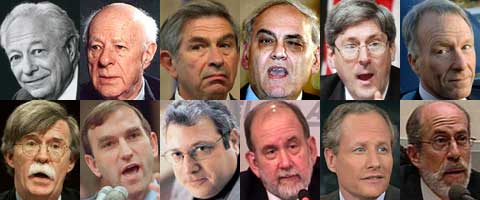
A gallery of filthy bastards, but their revolting cynicism and criminality does not make them unwelcome in the best media platforms: Irving Kristol, Norman Podhoretz, Paul Wolfowitz, Richard Perle, Douglas Feith, Scooter Libby, John Bolton, Eliot Abrams, Robert Kagan, Michael Ledeen, William Kristol, Frank Gaffney Jr. Their continued success is an apt reflection of our social rottenness.
Publicly, most of the reassessment of the post-Cold War world was presented by the top military brass. For example, General Carl Vuno, Chief of Staff of the US Army, told a House Committee in May 1989: “Much more complex [than any peril posed by the Soviet Union] is the threat situation developing in the rest of the world. . . . In this increasingly multipolar world, we face the potential of multiple threats from countries and factors which are becoming more sophisticated militarily and more aggressive politically” [2].
General Colin Powell, Chairman of the Joint Chiefs of Staff at the time, likewise argued before a Senate Committee that despite the collapse of the Soviet Union the United States needed to continue its military buildup because of numerous other obligations: “With all these challenges and opportunities confronting our nation, it is impossible for me to believe that demobilizing or hollowing out the American military is a feasible course of action for the future. The true ‘peace dividend’ is peace itself. . . . Peace comes about through the maintenance of strength” [3].
While the military brass, often donned in nifty and flamboyant uniforms, publicly took the center stage in the fight against the downsizing of the military-industrial complex, civilian militarists, working in and around the Pentagon and the associated hawkish think-tanks, schemed from behind the scenes. These included the then-Defense Secretary Dick Cheney, his Undersecretary of Defense Paul D. Wolfowitz, Zalmay Khalilzad, then a Wolfowitz aide, and I. Lewis “Scooter” Libby, then principal Deputy Undersecretary of Defense for Strategy. This group of men and their co-thinkers and collaborators (such as Richard Perle, Douglas Feith, Michael Ladeen, Elliott Abrams, Donald Rumsfeld, William Kristol, John Bolton, and others) worked diligently together on averting post-Cold War cutbacks. “What we were afraid of was people who would say, ‘Let’s bring all of the troops home, and let’s abandon our position in Europe’,” recalled Wolfowitz in an interview [4].
While these military planners were officially affiliated with the Pentagon and/or the Bush (Sr.) administration, they also closely collaborated with a number of jingoistic lobbying think-tanks such as the American Enterprise Institute, Project for the New American Century and the Jewish Institute for National Security Affairs that were set up to serve either as the armaments lobby or the Israel lobby or both. Even a cursory look at the records of these militaristic think tanks—their membership, their financial sources, their institutional structures, and the like—shows that they are created to essentially serve as institutional fronts to camouflage the incestuous business and/or political relationship between the Pentagon, its major contractors, the top military brass, the Israel lobby, and other similarly hawkish bodies in and around the government [5].
In a carefully calculated effort to redefine the post-Cold War world as a “more dangerous” world, and accordingly craft a new “National Security Strategy” for the United States, this team of military planners and militaristic think-tanks produced a new military-geopolitical document in the immediate aftermath of the collapse of the Soviet Union which came to be known as “Defense Planning Guidance,” or “Defense Strategy for the 1990s.” The document, unveiled by the White House in the early 1990s before the Congress, focused on “unpredictable turbulent spots in the Third World” as new sources of attention for the U.S. military power in the post-Cold War era: “In the new era, we foresee that our military power will remain an essential underpinning of the global balance . . . that the more likely demands for the use of our military forces may not involve the Soviet Union and may be in the Third World, where new capabilities and approaches may be required” [6].
To respond to “turbulences in the most vital regions,” the new situation called for a strategy of “discriminate deterrence”—a military strategy that “would contain and quell regional or local conflicts in the Third World with lightning speed and sweeping effectiveness before they get out of hand.” In the post-Cold War world of “multiple sources of threats” the United States would also need to be prepared to fight “low-intensity” and “mid-intensity” wars. Low or mid-intensity does not refer to the level of firepower and violence employed but to the geographic scale compared to an all-out war on a global or regional war that could disrupt international trade and paralyze global markets.
The “Defense Strategy for the 1990s” also spoke about maintaining and expanding America’s “strategic depth”—a term coined by the then Defense Secretary Dick Cheney. “Strategic depth” had a geopolitical connotation, meaning that, in the aftermath of the collapse of the Berlin Wall, the United States must extend its global presence—in terms of military bases, listening and/or intelligence stations, and military technology—to areas previously neutral or under the influence of the Soviet Union.
Policy prescriptions of these self-fulfilling prophecies were unmistakable: having thus portrayed (and subsequently created) the post-Cold War world as a place fraught with “multiple sources of threats to U.S. national interest,” powerful beneficiaries of the Pentagon budget succeeded in maintaining military spending at essentially the Cold War levels. Proponents of continued militarism “moved with remarkable speed to ensure that the collapse [of the Soviet Union] would not affect the Pentagon’s budget or our ‘strategic position’ on the globe we had garrisoned in the name of anti-communism” [7].
To carry out the thus-outlined “National Security Strategy” of the post-Cold War world, militaristic U.S. planners need pretexts, which often means inventing or manufacturing enemies. Beneficiaries of war dividends sometimes find “external enemies and threats” by definition, “by deciding unilaterally what actions around the world constitute terrorism,” or by arbitrarily classifying certain countries as “supporters of terrorism,” as Bill Christison, retired CIA advisor, put it [8].
They also create international frictions by insidious policies of provoking anger and violence, thereby justifying war and destruction, which will trigger further acts of terror and violence in the fashion of a vicious cycle. Of course, the nefarious driving force behind this self-fulfilling strategy of war and terrorism is to maintain the high dividends of the business of war. The late Gore Vidal has satirically characterized this wicked need of the beneficiaries of war and militarism to constantly come up with new threats and enemies as an “enemy of the month club: each month we are confronted by a new horrendous enemy at whom we must strike before he destroys us” [9].
A small war here, a small war there, a “low-intensity” war in country x, and a “mid-intensity” war in country y—cynically scripted as “controlled wars”—are strategies that would keep military appropriations flowing into the coffers of the military-industrial complex without causing a major or worldwide conflict that could cripple world markets altogether.
Against this backdrop—the collapse of the Soviet Union, the “threat of peace dividends” to the interests of the military-industrial complex, and the consequent need of the beneficiaries of war dividends for substitutes for the “communist threat” of the Cold War era—the U.S. government’s approach to the heinous attacks of 9/11 as an opportunity for war and aggression should not have come as a surprise to anyone familiar with the vicious needs of militarism. The monstrous attacks were treated not as crimes but as “war on America.” Once it was thus established that the United States was “at war,” military buildup and imperialist aggressions followed accordingly. As the late Chalmers Johnson put it, the 9/11 tragedy “served as manna from heaven to an administration determined to ramp up military budgets” [10].
Champions of the U.S. wars of choice had already labeled “unfriendly” governments such as those ruling in Iran, Iraq, Syria, Libya, and North Korea as rogue and/or supporter of terrorism, which required “regime change.” Before the 9/11 attacks, however, such demonizing labels were apparently not enough to convince the American people to support U.S. wars of preemption. The 9/11 tragedy served as the militarists’ coveted pretext for such wars—hence, the regime change in Iraq, to be followed by similar changes of “unfriendly” regimes in many other countries in the region and around the world.
Just as the beneficiaries of war dividends, the military-security-industrial complex, view international peace and stability inimical to their interests, so too the militant Zionist proponents of “greater Israel” perceive peace between Israel and its Palestinian/Arab neighbors perilous to their goal of gaining control over the “promised land.” The reason for this fear of peace is that, according to a number of the United Nations’ resolutions, peace would mean Israel’s return to its pre-1967 borders, that is, withdrawal from the West Bank and Gaza Strip. But because proponents of “greater Israel” are unwilling to withdraw from these occupied territories, they are therefore afraid of peace—hence, their continued attempts at sabotaging peace efforts/negotiations.
By the same token, these proponents view war and convulsion (or, as David Ben-Gurion, one of the key founders of the State of Israel, put it, “revolutionary atmosphere”) as opportunities that are conducive to the expulsion of Palestinians, to the geographic recasting of the region, and to the expansion of Israel’s territory. “What is inconceivable in normal times,” Ben-Gurion pointed out, “is possible in revolutionary times; and if at this time the opportunity is missed and what is possible in such great hours is not carried out—a whole world is lost” [11].
Echoing a similarly evil sentiment that the dissolution and fragmentation of the Arab states into a mosaic of ethnic groupings is possible only under conditions of war and sociopolitical convulsion, the notoriously hawkish Ariel Sharon likewise pointed out on March 24, 1988, “that if the Palestinian uprising continued, Israel would have to make war on her Arab neighbors. The war, he stated, would provide ‘the circumstances’ for the removal of the entire Palestinian population from the West Bank and Gaza and even from inside Israel proper” [12].
The view that war would “provide the circumstances” for the removal of Palestinians from the occupied territories is premised on the expectation that the United States would go along with the notion and would, therefore, support Israeli expansionism in the event of the contemplated war. The expectation is by no means outlandish or unusual, as the beneficiaries of war and military spending in the U.S. do, indeed, gladly oblige, not so much for the sake of Israel or the Jewish people as for their own nefarious purposes—hence, the de facto alliance between the military-industrial complex and the Israel lobby.
Because the interests of these two powerful interest groups converge over fomenting war and political convulsion in the Middle East, an ominously potent alliance has been forged between them—ominous, because the mighty U.S. war machine is now supplemented by the almost unrivaled public relations capabilities of the hardline pro-Israel lobby in the United States. The convergence and/or interdependence of the interests of the military-industrial complex and those of militant Zionism on war and political convulsion in the Middle East is at the heart of the perpetual cycle of violence in the region.
The alliance between the military-industrial complex and the Israel lobby is unofficial and de facto; it is subtlely forged through an elaborate network of powerful militaristic think tanks such as The American Enterprise Institute, Project for the New American Century, America Israel Public Affairs Committee, Middle East Media Research Institute, Washington Institute for Near East Policy, Middle East Forum, National Institute for Public Policy, Jewish Institute for National Security Affairs, and Center for Security Policy.
In the immediate aftermath of the Cold War, these militaristic think tanks and their hawkish operatives in and around the government published a number of policy papers that clearly and forcefully advocated plans for border change, for demographic change, and for regime change in the Middle East. For example, in 1996 an influential Israeli think tank, the Institute for Advanced Strategic and Political Studies, sponsored and published a policy document titled “A Clean Break: A New Strategy for Securing the Realm,” which argued that the government of Prime Minister Benjamin Netanyahu “should ‘make a clean break’ with the Oslo peace process and reassert Israel’s claim to the West Bank and Gaza. It presented a plan whereby Israel would ‘shape its strategic environment,’ beginning with the removal of Saddam Hussein and the installation of a Hashemite monarchy in Baghdad, to serve as a first step toward eliminating the anti-Israeli governments of Syria, Lebanon, Saudi Arabia, and Iran” [13].
In an “Open Letter to the President” (Clinton), dated 19 February1998, a number of hawkish think tanks and individuals, representing the military-industrial complex and the Israel lobby, recommended “a comprehensive political and military strategy for bringing down Saddam and his regime.” Among the letter’s signers were the following: Elliott Abrams, Richard Armitage, John Bolton, Douglas Feith, Paul Wolfowitz, David Wurmser, Dov Zakheim, Richard Perle, Donald Rumsfeld, William Kristol, Joshua Muravchik, Leon Wieseltier, and former Congressman Stephen Solarz [14].
In September 2000, another militaristic think tank, called Project for the New American Century (PNAC), issued a report, titled “Rebuilding America’s Defenses: Strategy, Forces and Resources for a New Century,” which explicitly projected an imperial role for the United States the world over. It stated, for example, “The United States has for decades sought to play a more permanent role in [Persian] Gulf regional security. While the unresolved conflict with Iraq provides the immediate justification, the need for a substantial American force presence in the Gulf transcends the issue of the regime of Saddam Hussein.” The sponsors of the report included Richard Cheney, Donald Rumsfeld, Paul Wolfowitz, Lewis Libby, and William Kristol, who was also a co-author of the report [15].
The influential Jewish Institute for the National Security Affairs (JINSA) also occasionally issued statements and policy papers that strongly advocated “regime changes” in the Middle East. Its advisor Michael Ladeen, who also unofficially advised the Bush administration on Middle Eastern issues, openly talked about the coming era of “total war,” indicating that the United States should expand its policy of “regime change” in Iraq to other countries in the region such as Iran and Syria. “In its fervent support for the hardline, pro-settlement, anti-Palestinian Likud-style policies in Israel, JINSA has essentially recommended that ‘regime change’ in Iraq should be just the beginning of a cascade of toppling dominoes in the Middle East” [16].
In brief, the evidence is overwhelming (and irrefutable) that the raging chaos in the Middle East, North Africa and Eastern Europe/Ukraine is not because of the “misguided” policies of the United States and its allies, as many critics and commentators tend to maintain. It is, rather, because of premeditated and carefully-crafted policies that have been pursued by an unholy alliance of the military-security-industrial complex and the Israel lobby in the post-Cold War world.
Ismael Hossein-zadeh is Professor Emeritus of Economics (Drake University). He is the author of Beyond Mainstream Explanations of the Financial Crisis (Routledge 2014), The Political Economy of U.S. Militarism (Palgrave–Macmillan 2007), and the Soviet Non-capitalist Development: The Case of Nasser’s Egypt (Praeger Publishers 1989). He is also a contributor to Hopeless: Barack Obama and the Politics of Illusion (AK Press 2012).
References
[1] Extensive excerpts from my book, The Political Economy of U.S. Militarism, especially from chapters 4 and 6, are used in this essay.
[2] Quoted in Sheila Ryan, “Power Projection in the Middle East,” inMobilizing Democracy, edited by Greg Bates (Monroe, Maine: Common Courage Press, 1991), p. 47.
[3] Ibid., p. 46.
[4] James Mann, “The True Rationale? It’s a Decade Old,” Washington Post, Sunday (7 March 2004), page B02.
[5] For a detailed exposition of this dubious relationship see Ismael Hossein-zadeh, The Political Economy of U.S. Militarism (Palgrave-Macmillan 2007), chapter 6.
[6] Chalmers Johnson, The Sorrows of Empire (New York, NY: Metropolitan Books, 2004), pp. 20-21.
[7] Ibid., p. 20.
[9] Gore Vidal, Perpetual War for Perpetual Peace: How We Got To Be So Hated (New York: Thunder’s Mouth Press/Nation Books, 2002), pp. 20-1.
[10] Chalmers Johnson, The Sorrows of Empire (New York, NY: Metropolitan Books, 2004), p. 64.
http://vho.org/tr/2003/3/Sniegoski285-298.html>.
[12] Ibid.
[13] Ibid.
[14] Ibid.
[15] Ibid.
[16] William D. Hartung, How Much Are You Making on the War, Daddy? (New York: Nation Books, 2003), p.109.
